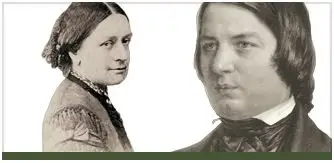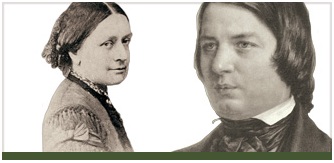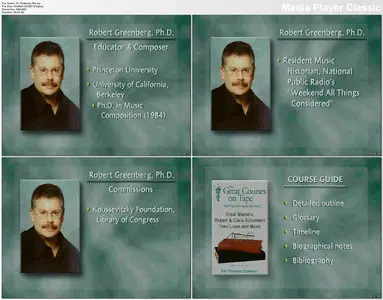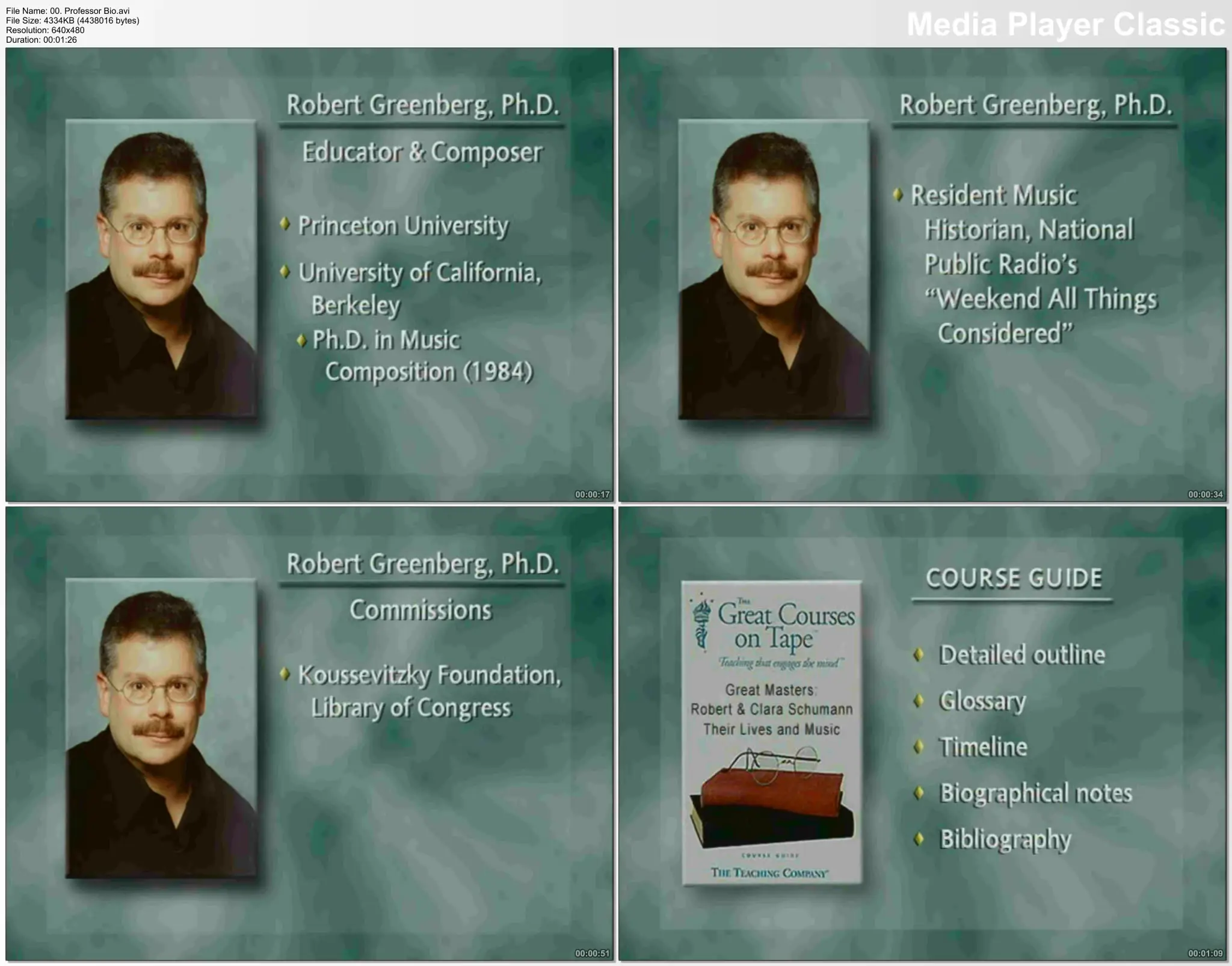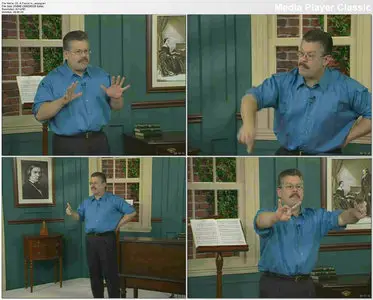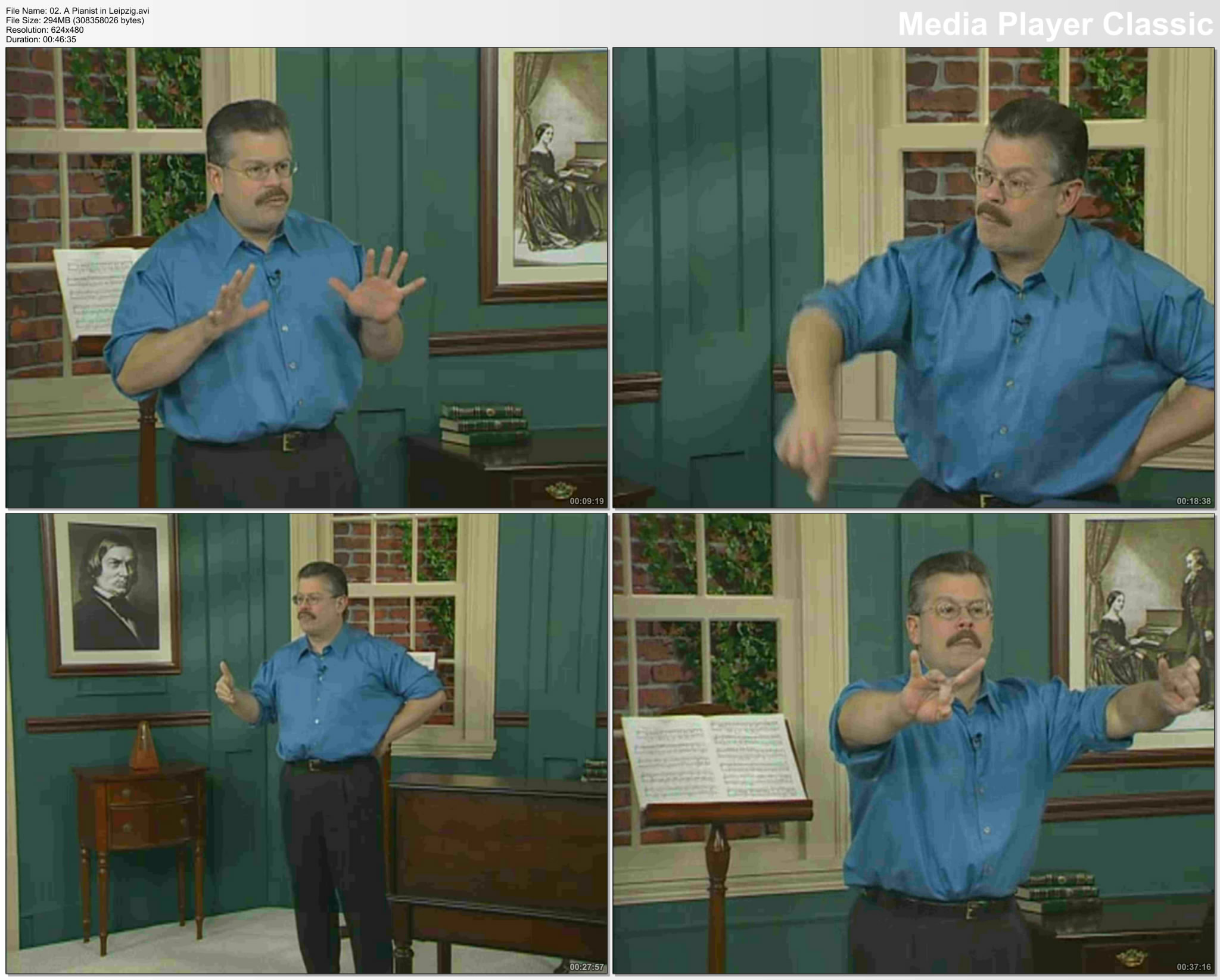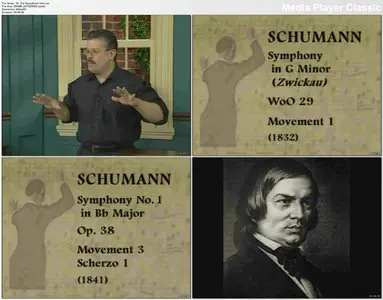TTC VIDEO - Great Masters - Robert and Clara Schumann - Their Lives and Music (2010)
DVD-Rip | AVI | XviD MPEG4 @ 800 Kbit/s | 640x480 | MP3 Stereo @ 160 Kbit/s 48 KHz | 6 Hours | 2.29 GB
Genre: Classical Music, Education | Label: The Great Courses | Language: English | Subtitle: None
DVD-Rip | AVI | XviD MPEG4 @ 800 Kbit/s | 640x480 | MP3 Stereo @ 160 Kbit/s 48 KHz | 6 Hours | 2.29 GB
Genre: Classical Music, Education | Label: The Great Courses | Language: English | Subtitle: None
In this course by Professor Robert Greenberg you meet the Schumanns—brilliant, gifted, troubled, and unique in the history of music. Robert Schumann (1810–1856) and his wife Clara Wieck Schumann (1819–1896) have earned a distinct place in the annals of Western music. As a couple with a two-career marriage—he as a pioneering critic and composer, she as one of the leading concert pianists of Europe—they were highly exceptional in their own time though they seem very contemporary in ours.
In this course by Professor Robert Greenberg you meet the Schumanns—brilliant, gifted, troubled, and unique in the history of music.
Robert Schumann (1810–1856) and his wife Clara Wieck Schumann (1819–1896) have earned a distinct place in the annals of Western music. As a couple with a two-career marriage—he as a pioneering critic and composer, she as one of the leading concert pianists of Europe—they were highly exceptional in their own time though they seem very contemporary in ours.
Great Critic, Great Composer—Coupled with a Great Pianist
Robert Schumann is unique by virtue of being the only great composer who was also a great critic. His contributions to the Neue Zeitschrift für Musik (New Journal for Music), the periodical he founded in 1834, made him far better known originally as a writer than composer. It also gave him a platform from which he could champion the Romantic ideas that informed his own works and recognize the geniuses of his time, including Chopin, Mendelssohn, Brahms, and Franz Liszt.
The Zeitschrift would go down in history as one of the most important musical periodicals of the 19th century. Robert was its leading voice for 10 years, until depression and ill health led him to sell it in 1844. When he returned to print again nine years later it was a memorable occasion, for he broke his long silence to hail the gifts of a brilliant but thus far unknown young composer from Hamburg, Johannes Brahms.
This essay proved a mixed blessing for Brahms, but it clearly showed the quality of Robert's critical judgment. It came at the beginning of a close friendship between Brahms and the Schumann family. This friendship endured through the difficult years when Clara had to concertize continually to support her children after Robert's death—a story that Professor Greenberg details in his Great Masters lectures on the life and music of Brahms.
Clara was one of the most famous pianists and acclaimed touring musicians in Europe at a time when women of her class were rarely encouraged to pursue careers outside the home.
She was also a composer of no small talent, though her family commitments and touring schedule kept her from developing her compositional gifts as fully as she might have. The songs that she did compose with Robert's encouragement show great promise, however. During this lecture series you will hear two of Clara's songs and one of her piano works.
An Extraordinary Marriage
Clara was the only daughter of Friedrich Wieck, a tyrannical yet innovative piano teacher. His methods may have caused the crippling hand injury that ended Robert's own dreams of becoming a piano virtuoso and caused him to turn decisively toward writing and composing as his way of making an impact on the art of his time.
Clara first met her future husband when he was 18 and she was only 9. The two fell in love when Robert was 25 and she was 16—five years after her public-performance debut on the stage of the Gewandhaus in her native Leipzig.
After a dramatic, intrigue-filled courtship that included smuggled letters, secret meetings, and a lawsuit brought by Clara against her outraged father, the couple would marry when Robert was 30 and Clara was a day short of her 21st birthday.
Their alliance would result in eight children and was a loving one, though not without its tensions. Clara had been raised to be a star on the concert stage, not a wife and mother, and Robert did not always find it comfortable to be the husband of a woman whose fame and earning power exceeded his own, or to endure the slights he sometimes received while making the concert rounds with her.
And Clara was not only the main breadwinner of a growing family, but the wife of an emotionally unstable man who alternated between manic bouts of awesome creativity (he once wrote an entire symphony in four days) and terrifying fits of depression, exacerbating the worsening effects of the syphilis that would eventually kill him.
Triumph amid Adversity
Despite his illness and instability, Robert Schumann triumphed over adversity by leaving behind a magnificent legacy of compositions and insights into music that you will explore in these lectures.
He began as a writer of exquisite, often literature-inspired works for piano or piano and voice such as Papillons (1831), Carnaval (1835), Arabesque (1839), and Frauenliebe und Leben (1840). He succeeded, with Clara's indispensable encouragement, in combining his taste for "program music" (instrumental works inspired by and intended to bring literature to life) with the strict compositional technique and abstract content required to write chamber and orchestral music—the kind of "stand-alone" works that critics call "absolute music."
Thus Robert was able, in the wonderful "symphonic year" of 1841, to step out from beneath the long shadow cast by Beethoven's symphonies and make his own mark in this form with his First Symphony in B-flat Major, to be followed by three more by 1851.
In the second half of 1842, Robert turned his energies to chamber music and produced three string quartets as well as a piano quartet and piano quintet, all of which remain among the most enduring works in the chamber repertoire.
Music was, for the Romantic 19th century, truly the ultimate art form, and Robert Schumann, according to Professor Greenberg, represents its Romantic quintessence.
"Of all the early Romantic composers, it is Robert Schumann even more than Hector Berlioz whose music stands as the quintessence of the Romantic ideal—an art that combines music and literary storytelling in pursuit of the fullest possible degree of expression. It tended to strike contemporaries—including, in this case, even Schumann's wife, Clara—with its originality, its personal character, and its willingness to test aesthetic limits."
Works you'll hear in the lectures are excerpted from:
Robert Schumann's Works:
Papillons (Butterflies), op. 2 (1831)
Carnaval, op. 9 (1835)
Symphony no. 1 in B-flat Major (Spring), op. 38 (1841)
Piano Quintet in E-flat, op. 44 (1842)
Das Paradies und die Peri (Paradise and the Peri), oratorio (1843)
Piano Concerto in A Minor, op. 54 (1845)
Concert Piece for Four Horns and Orchestra, op. 86 (1849)
Symphony no. 3 in E-flat Major, op. 97, Rhenish (1850)
"An Anna" (1828)
Symphony in G Minor, WoO 29, Zwickau (1832)
Kreisleriana, op. 16 (1838)
Arabesque, op. 18 (1839)
Frauenliebe und Leben (Woman's Love and Life), op. 42 (1840)
Symphony no. 2 in C Major, op. 61 (1846)
Theme in E-flat Major (1854)
Clara Schumann's Works:
Walzer (1834)
Soirées Musicales, op. 6 (1836)
Am Strand (Musing on the Roaring Ocean) (1840).
WUPLOAD


